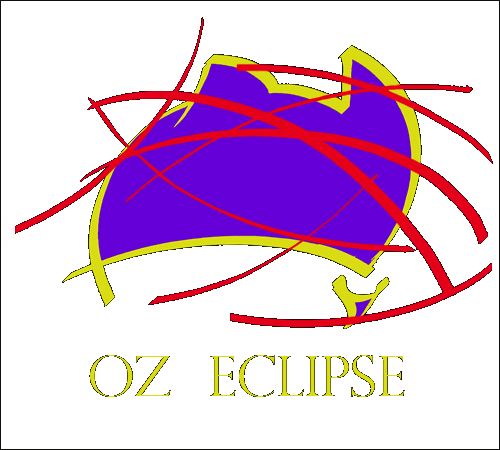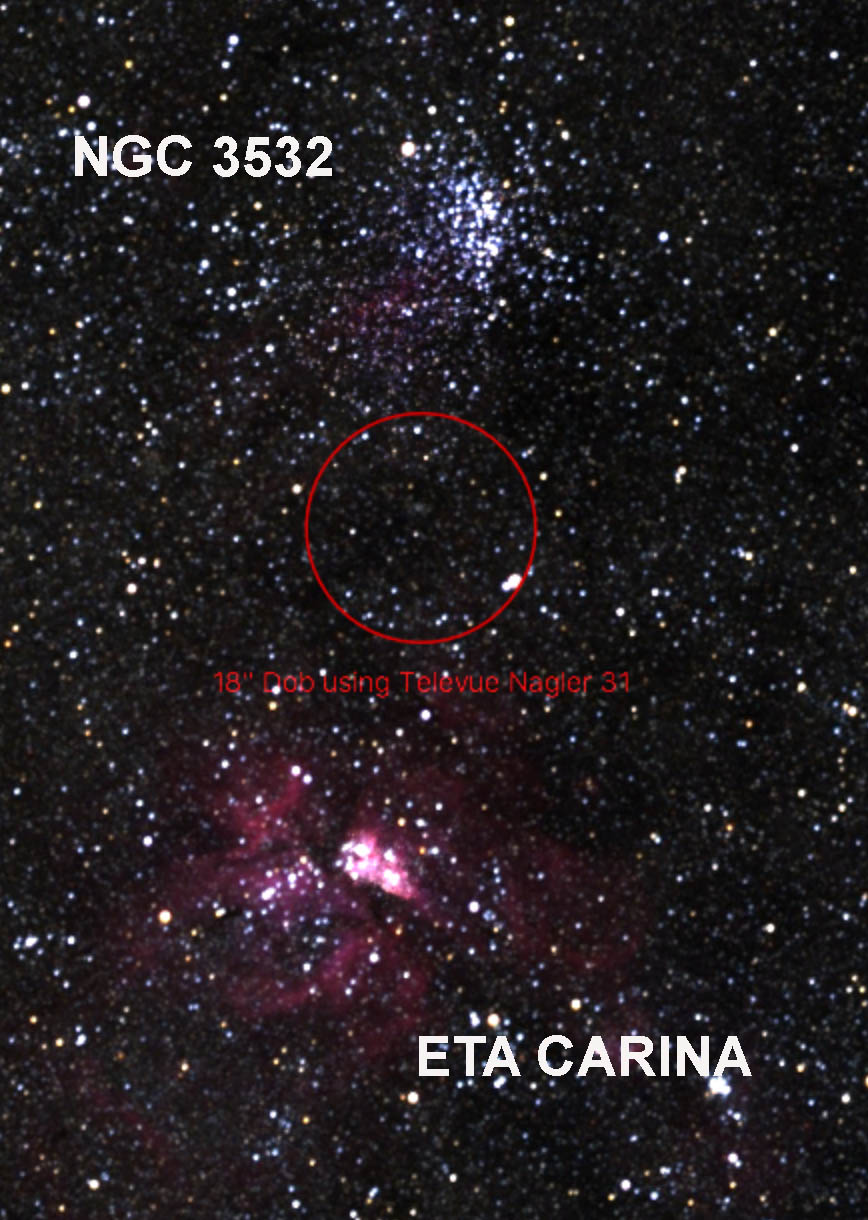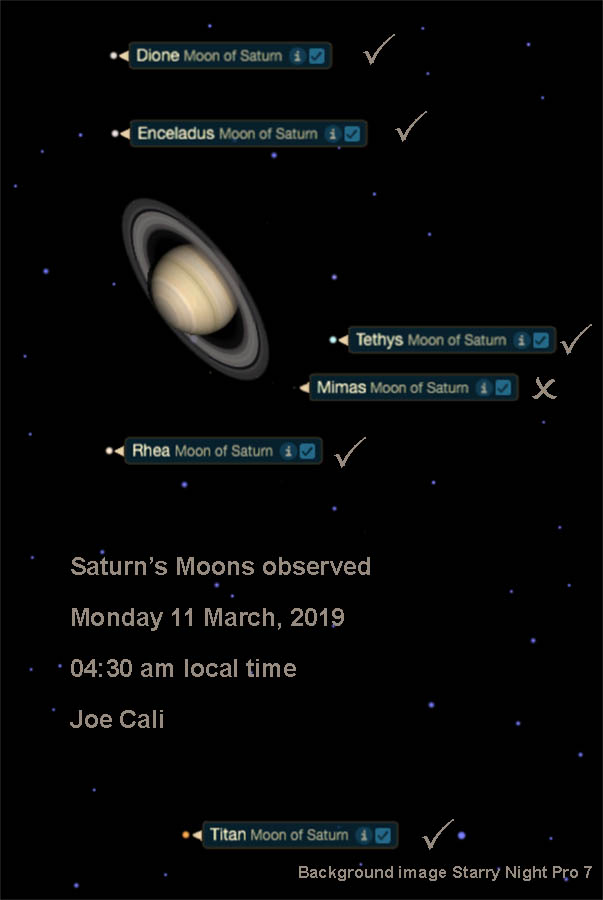
|
|
WAITING FOR THE
SHADOW
Astronomical Observing and Photography
|
Half a night is better than none!
Perseverance and psychological warfare pay off
Sunday March 10, 2019.
I packed the car at lunchtime and managed a "nanna nap" mid-afternoon.
After attending a dinner party with friends early evening, I arrived
home at 10pm, changed clothes, had a strong coffee and drove the 1 hr
to Yass. Arriving on site at 11pm the sky was 5/8 clear, 3/8 cloud. In
this region cloud comes from the NW, SWE or S. There was a large thick
opalescent cloud mass on the S to SW horizon which is the cloud mass
that gave me the gut feeling that it was going to cloud over.
Nonetheless, I wanted to check a problem with the encoder cables and so
I set up the 18".
This time, the azimuth encoder was giving no signal at all. I've been
having problems for a while and so I bit the bullet, tipped the tube to
the horizon and removed the entire encoder cabling loom. This dob has a
Nexus digital setting circle(DSC) with 3600 step encoders.
It also has a Telrad but no optical finder scope. When the DSC is
working, the setup works very well. Without the DSC, an 8x50mm finder
would have been very useful.
It
was almost 2am. I had been on site for almost 3hrs. Having finished
removing the encoder cables and with the sky still completely overcast,
I went to sit in the car, listen to the radio and post to the forum
that I was giving up. That did the trick. During the few minutes I was
sitting in the car writing that post that I was giving up, 2 hrs of
solid cloud magically vanished. I didn't notice this was happening
because I was staring at the blinding white computer screen. Seeing was
not bad, not fantastic but major bushfires 500km south of here meant
that smoke affected transparency away from the zenith. Recent intense
dust storms had coated the mirror with a thin layer of dust which will
need cleaning in coming weeks.

I
had 3.5 hrs to astronomical twilight. First target was the Leo triplet.
My 31mm Nagler gives me a field just shy of 1 degree. M65, M66 and NGC
3628 fit nicely into the field. In my minds eye, I "zoomed" in
imagining myself being on the edge of each of these galaxies looking at
these different "Milky Ways." I slipped across to view the two spiral
galaxies M95, M96, then to the fainter triplet of the ellipticals M105,
NGC 3371 and the spiral NGC 3373.
Next, I moved east to my nights primary target, the Markarian Chain in
the Virgo Cluster. Starting at M84, I meandered through Markarian's
Chain of galaxies using the 31mm Nagler. M86, M88, NGC4402 and the
Eye's galaxies.

It's inspiring to see a handful of galaxies scattered through the
field, you shift the field across an there's another half dozen
galaxies in field. I wended my way down Markarian's chain to M88 then
worked my way back around the circuit going across to M91 up to M90
across to M89 then M87. I returned to M84, changed to a 17mm Nagler and
did another lap. Ok, enough, I had reached galaxy saturation for this
session.
4:00 am and 90 minutes until twilight. Scorpius and Sagittarius were
rising in the east. Jupiter was quite high but Saturn still a bit low.
Jupiter through an 18" is very bright. I didn't want to lose my dark
adaption so I left them for later. I took a peek at the Lagoon and
Triffid nebulae then turned my attention south to my favourite bright
objects which I never tire of observing. The town of Yass, pop 30000,
sits 15km south of the property and casts some light pollution in the
lower 10-15 degrees of the south horizon. However, being a small
country town, lights go out and by early morning there is only the
slightest glow on the horizon.
The Small Magellanic Cloud was near its lower culmination point about
18 degrees altitude and 16 degrees below the South Celestial Pole but
still high enough to give me a clear view of 47 Tuc.

The cluster takes magnification well and opened up despite the low
altitude. I moved across to the Large Magellanic Cloud, I pointed the
scope with the 31mm to the edge of the galaxy. I slowly scanned the
nebulosity and star fields and clusters finishing at the Tarantula
Nebula. The Tarantula Nebula through a larger instrument takes on a
three dimensional appearance. It's quite the space walk. Next I moved
onto Eta Carina. Through an 18", Eta Carina the contrast between bright
nebulosity and the dark lanes and detail in the Homunculus nebula is
jaw dropping. I slipped across to my favourite open cluster, NGC 3532,
a very condensed open cluster with 150 members near Eta Carina.
I
looked up and up. Omega Centauri was clearly and easily visible to the
naked eye and really high in the sky, 70+ degrees altitude. I took a
deep breath, pointed the scope up there then triple checked the ladder.
When pointed this high, the eyepiece is more than 2 m off the ground, I
have to climb several steps up the ladder to get my eye to the
eyepiece. The scope takes much more effort to push and so the ladder
needs to be very secure on the ground while pushing the scope. Looking
so high up the transparency was excellent and the view of omega's
300000 stars was outstanding. I'd never looked at it so high in the sky
with the 18" and resolved to do it again despite the risk being so far
up a ladder.
Ok 430am and time to blow the dark adaptation. Jupiter and Saturn here I come.
Using a 7mm Nagler (340x) I could get several seconds of stillness and
clarity before the image would break up. I had to chase focus a bit but
during those second of clarity, I could see impressive detail in the
central belts. Unfortunately I am no Alex Massey and won't embarass
myself trying to sketch.
I moved to Saturn and checked off 5 of Saturn's Moons - Titan, Rhea, Tethys, Enceladus, & Dione.
Extract from Starry Night Pro 7
I tried but could not see Mimas nor Hyperion and did not look for
Iapetus. The Cassini division was clearly visible but conditions and
Saturn's low 30 degree altitude made Encke's division just too
difficult. A few times I fooled myself thinking I could see it but on
balance I'd have to say that I didn't resolve it.
With about 25 mins to twilight I decided to call it quits having packed
a lot into a short nights observing, packed the scope into Phil's
observatory and drove home arriving at sunrise at 7am. I tumbled into
bed and slept until mid-afternoon. If you're wondering what my boss
will say, today is a public holiday here. ;-)






